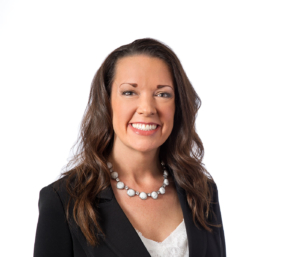July 6, 2020
On July 2, 2020, the Ohio Department of Health (ODH) and the Ohio Department of Education (ODE) released new guidance regarding the re-opening of schools for the 2020-2021 school year. This guidance, which is titled “COVID-19 Health and Prevention Guidance for Ohio K-12 Schools,” provides five basic guidelines for school districts to follow when developing their re-opening plans. While the Guidance does include some mandatory directives, in most areas, decisions regarding how the Guidance will be implemented is left to school districts. Each of the five guidelines raises various issues for school districts with respect to policy and operations. The following is a summary of each guideline, along with issues for consideration.
Vigilantly Assess for Symptoms
The Guidance suggests that all students (and their caregivers), staff, and volunteers (if permitted at all) conduct daily health checks prior to going to school. This check should include a temperature check and assessing for other symptoms. Anyone with symptoms should stay home. The Guidance states that schools may choose to take temperatures of students and staff members as they enter the building. Districts will need to consider whether it is feasible to conduct a temperature check for all students as they enter or whether they will rely on parents to conduct these checks at home. Districts will need to have the necessary equipment, such as thermometers, to assess symptoms even if most checks are occurring at home. Districts will also need to consider how (or if) they will conduct follow-up with families regarding a student’s absence when a student is called off due to illness.
Schools will need to establish an area in every building to isolate any student or staff member who begins to exhibit symptoms at school until the individual can leave the building. Considerations include:
- Maintaining an area that is separate from the nurse’s office so that other students who require medical attention or medication are not exposed to the symptomatic individual
- If this is not possible, establishing an area in the nurse’s office where the symptomatic individual can be isolated (consider curtains that can be drawn around a cot, etc.)
- Having others who need medical assistance report to a separate area if a symptomatic individual is in the nurse’s office (even if the area is curtained off)
- Maintaining a supply of masks to be provided to any individual exhibiting symptoms (unless medically contraindicated)
- Ensuring that the employee monitoring anyone showing symptoms has appropriate PPE
- Developing a protocol for cleaning any areas where a symptomatic individual waited prior to leaving the building and areas the individual accessed during the day
Schools are also required to refer symptomatic individuals to a health care professional or a testing site. Districts should compile appropriate referrals and document that the referral has been made.
In the case of a positive COVID-19 individual, or a suspected positive COVID-19 individual in a school building, the school is to notify the local department of health for further guidance, including assistance with notifying individuals who may need to quarantine. FERPA contains an exception that allows the disclosure of personally identifiable information in the event of a health/safety emergency. Districts should develop a protocol for notifications and update policies accordingly.
Districts should put plans in place to address situations where a number of students and/or staff members must self-quarantine based on possible exposure (regardless of where the exposure occurred). In other words, students who must self-quarantine must still have appropriate opportunities for continued learning. Districts will also need to determine how to handle staff absences due to illness or the need to self-quarantine after possible exposure.
Districts are also urged to reconsider any policies that penalize students or staff members for absences or that reward perfect attendance.
Wash and Sanitize Hands to Prevent Spread
Handwashing is an effective way to prevent the spread of COVID-19 for one simple reason: it kills the virus.
Students, staff, and volunteers should practice frequent handwashing for at least twenty (20) seconds, before and after eating, as well as after using the restroom. Schools must provide opportunities throughout the day for handwashing.
Each school building will need to determine the logistics of frequent handwashing while maintaining social distancing. Schools will have to plan and coordinate the use of restrooms by students, staff, and volunteers. Schools can consider the use of portable handwashing stations in order to allow for frequent handwashing while practicing social distancing. Particularly for young students, teachers will need to instruct on appropriate handwashing technique. Staff members will also need to supervise young students to ensure that proper handwashing is actually taking place. It is possible that building schedules will need to be altered in order to accommodate increased handwashing.
To supplement handwashing, schools must provide hand sanitizer (60-95% alcohol based) in high traffic areas, including entrances to buildings and classrooms. Also, schools must instruct students and staff to use hand sanitizer.
Students, staff, and volunteers should avoid touching their mouths, noses, and eyes because the virus easily enters the body through membranes, and schools should consider providing signage and instruction to help reinforce these guidelines for preventing the spread of COVID-19.
Thoroughly Clean and Sanitize School Environment to Limit Spread on Shared Surfaces
Disinfecting surfaces reduces the spread of disease, including COVID-19. Schools should clean surfaces frequently and consider developing a disinfection plan. In addition, the following guidelines are also recommended for school environments:
- Use EPA-approved disinfectants against COVID-19, while being mindful of each district’s policies that address cleaning products and the use of certain chemicals in the school setting.
- Pay attention to high touch areas and shared materials.
- Provide sanitation wipes and/or disinfectants in each room and common space.
- Ensure sanitation wipes and disinfectants are labeled as for use against COVID-19.
- Minimize sharing of supplies and materials as much as possible.
- If supplies must be shared, sanitize between each user.
When determining how to disinfect the school environment and shared surfaces, school teams are encouraged to include custodial staff in these discussions. Additionally, protocols should be developed by each teacher to limit the use of shared materials and to disinfect any materials that are shared between student uses. Additional considerations include:
- The potential need for investment in multiple sets of the same materials in order to allow time for disinfection between uses
- Protocols for shared spaces such as the gym, library, music room, art room, etc.
- Protocols for lunch and recess
Additionally, students should never be responsible for disinfecting materials. This task should always be performed by a staff member and could lead to the need for additional staff members to perform custodial functions, or for teachers and paraprofessionals to take a larger role in cleaning work spaces and materials. Districts should be aware of potential labor/management issues that increased cleaning protocols could create.
Practice Social Distancing
Keeping a distance of six feet or more between people has been exceptionally effective against the spread of COVID-19 by minimizing the chance of coming into contact with respiratory droplets. This is particularly important in areas of loud speaking, singing, athletics or instrument playing.
The Guidance states: “School staff should try when possible to maintain 6-foot social distance among students, staff, and volunteers in all school environments, including classrooms, hallways, restrooms, cafeteria, playground, drop-off and pick-up locations, and school buses. Where social distancing is difficult, face coverings are even more essential.”
Notably, while the six feet of distance between people is strongly recommended, it is not mandated by the guidance. Instead, six feet of distance should be maintained “when possible.” This leaves school districts to determine how to balance the need for six feet of distance with the need to return students to school for in-person instruction. Districts should plan to maintain six feet of distance in all situations (and environments) where it is possible to do so. This will almost certainly result in the need to use classroom space effectively and potentially for smaller class sizes. The Guidance notes that where maintaining six feet of distance is not possible, face coverings are even more critical. In making this statement, the Guidance acknowledges that it will not always be possible to maintain six feet of distance in the school setting; but that every effort should be made to do so whenever possible. When six feet is not possible, three feet is considered an acceptable minimum by the American Academy of Pediatrics if face coverings are utilized and individuals are asymptomatic.
In addition to using signs and floor markings as social distance reminders, it’s important to rethink group situations and be creative with the use of space and time.
- Avoid using shared materials or shared spaces (lockers, cubbies, etc.) and reduce mixing student groups.
- Review schedules and group transitions to minimize groupings or movement.
- Group students in ways that minimize movement between rooms and in common spaces.
- Consider having teachers move from class to class instead of students.
- Food could be delivered and consumed in classrooms instead of using the cafeteria format.
- Analyze each classroom for square footage and determine the maximum number of students and staff who can occupy the rooms at any given time while remaining within determined health guidelines.
- Consider strategic use of non-classroom spaces for instructional purposes, such as cafeterias, auditoriums, gymnasiums, and outdoor areas.
- Consider split-scheduling, alternating days, weekend or evening uses, or staggering start/end times.
A key area of concern, from a social distancing perspective, will be school transportation. The Guidance states that school officials “should endeavor to do the best they can to keep social distancing on buses” and tacitly acknowledges that it is unlikely that six feet of distance can be maintained on buses. That being said, schools can consider the following:
- Assigning students to seats
- Have members of the same household sit together
- Have members of the same neighborhood sit together
- Requiring the use of masks on buses for all students is strongly recommended by the Guidance.
Districts will also need to determine how buses will be cleaned/sanitized between runs.
Districts will also need to determine how school visitors will be handled. Options include:
- Prohibiting visitors (except in the case of an emergency)
- Allowing visitors, but requiring a health screening prior to entering the building
- Allowing visitors, requiring a health screening prior to entering the building and limiting visitor access to certain areas of the building
Districts will need to determine how to handle events such as open houses, parent/teacher conferences, kindergarten orientation and IEP/Section 504 meetings. Virtual options exist, but will require advance planning. Additionally, districts should be prepared to make exceptions for parents who do not have access to technology.
Implement Face Coverings Policy
As already indicated, face coverings are critical in preventing person-to-person virus spread, especially when community spread is elevated and social distancing is not possible.
The Guidance requires all school staff and volunteers to wear cloth/fabric face coverings/masks that cover an individual’s nose, mouth, and chin, “unless it is unsafe to do so or where doing so would significantly interfere with the learning process.” If a staff member meets an allowable exception and is excused from this requirement, the District is required to provide the local health officials with written justification, upon request. Exceptions expressly include:
- Facial coverings in the school setting are prohibited by law or regulation;
- Facial coverings are in violation of documented industry standards;
- Facial coverings are not advisable for health reasons;
- Facial coverings are in violation of the school’s documented safety policies;
- Facial coverings are not required when the staff works alone in an assigned work area; or
- There is a functional (practical) reason for a staff member or volunteer to not to wear a facial covering in the workplace.
When masks would hinder the learning process, present a health or safety issue, or for those individuals who have difficulty wearing cloth masks, the Guidance recommends “face shields that wrap around the face and extend below the chin.” These may be most appropriate when interaction and communication with students would be negatively impacted by limited face visibility, such as with students with disabilities, English language learners, during foreign language instruction, or possibly during certain extracurricular activities.
Unlike staff requirements, districts will have discretion regarding student face coverings. The Guidance recommends that students in 3rd grade and up wear face masks unless they are unable to do so for a health or developmental reason. But the Guidance notes that the majority of experts opine that children as young as kindergarten can wear masks with consideration of developmental and physical circumstances. Districts will need to develop a policy for face coverings for all students and share the policy with families prior to the start of the school year. If face coverings are required, schools should determine how they will address students who do not bring a face covering to school, students whose face coverings become soiled or unwearable while at school and students who refuse to wear a face covering.
These guidelines leave districts with many decisions regarding facial barriers, including face masks and face shields. Districts must develop policies and procedures in accordance with the Guidance for staff, as well as students, and visitors that address areas of ambiguity, including:
- examples and/or lists of permissible exceptions(such as general positions that have industry standard conflicts), what the district will consider unsafe for mask wearing, and how the district will define “significant interference with the learning process”
- parameters for staff regarding permissible times/conditions to take a break from wearing a mask
- under what circumstances students and visitors will need to wear masks (in classrooms, lunch, special events, hallways, meetings, threshold if contingent on local community spread, etc.)
- how parental refusal and/or student discipline related to such requirements will be handled, and applicable procedures to challenge such
- specific procedure for the analysis of individual circumstances and necessary accommodations, while developing steps to avoid discrimination, bullying, or retaliation against individuals who are unable to wear masks
- requirements as applicable to recess, gym, transportation, student drop off/ pick up, etc.
- available options for individuals who cannot meet established expectations.
Reopening will be no small task, as Districts will need to consider the ever-evolving medical science, individual needs, community safety perceptions, and potential labor/management issues. It is strongly recommended that districts collaborate with all stakeholders, including parents and relevant union representatives on such policies and procedures. Districts should also review current policies and update any policies that are not in alignment with the procedures that will be utilized for the 2020-2021 school year.
If you have any questions about this new guidance regarding the re-opening of schools for the 2020-2021 school year and how it impacts your school district, students and teachers, please reach out here.





